With a few staple ingredients and a few minutes of hands-on time, you can create fresh, tender pasta that elevates any meal. Even better, you don’t necessarily have to have any fancy equipment!
Making pasta at home might sound intimidating, but it’s surprisingly simple. This homemade pasta recipe comes together so quickly, it is perfect for busy weeknights or last-minute dinner parties. Once you try it, you may never buy boxed pasta again!
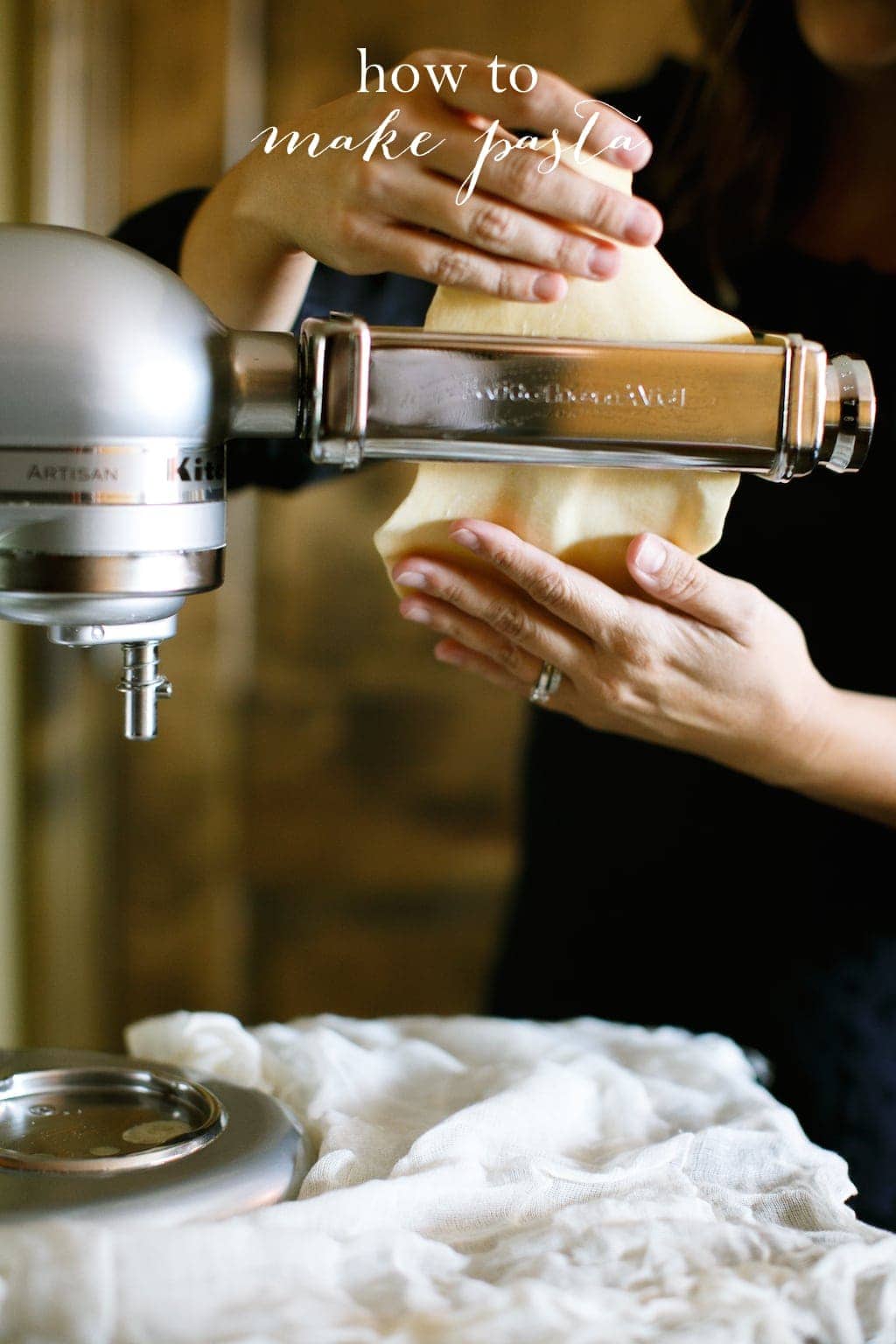
Years ago, I invested in the pasta maker attachment for my Kitchenaid mixer and I have never looked back. If I had only known how easy it was to make fresh pasta, I would have tossed the boxes years ago!
We have enjoyed it so much that I have purchased additional pasta roller attachments as well. The options are endless when you are making homemade pasta. It’s delicious and so much easier than you might think!
Pasta is an incredible comfort food, and it’s been one of my favorite foods for my entire life. In my catering career, pasta was my specialty, and I only grew to love it more!
It pairs well with all of my easy pasta recipes including Creamy Carbonara, Pasta Con Broccoli, Pork Ragu and Bolognese. I’m always here to help with your carb intake!


Why You’ll Love Homemade Pasta
- Quick and Easy – Start to finish in less than 15 minutes.
- Fun and Family Friendly – Our girls love making it!

You don’t need any tools to make homemade pasta – a rolling pin and pizza cutter or knife work well, but tools do make it quicker and easier.
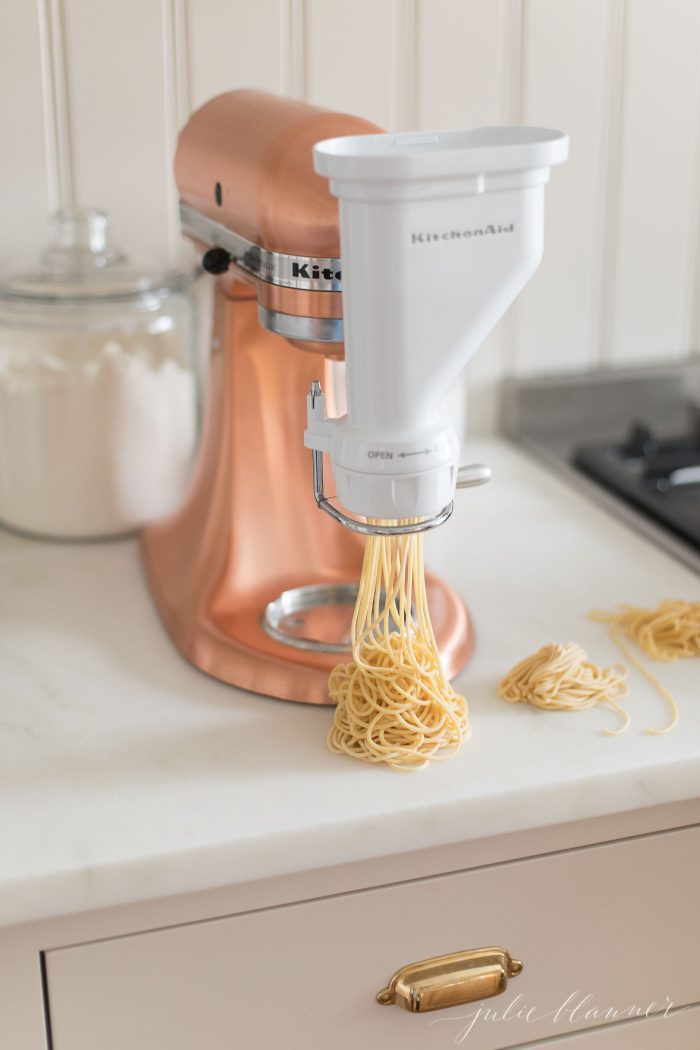
Tools I Love

Substitutions and Variations
- Gluten Free – Feel free to experiment with gluten free flour mixes for a homemade gluten free noodle. Bob’s Red Mill Gluten Free 1-to-1 Baking Flour is a great substitution.
- Wheat – Try combining 2 1⁄2 c sifted whole wheat flour with 1 c sifted unbleached flour, 4 eggs, 2 Tbsp water, and 1⁄2 tsp salt for a healthier twist.
- Arugula Pasta -Add 5 ounces of arugula to a food processor and add to the recipe.
- Spinach Pasta – Add 5 ounces of spinach to a food processor and proceed with recipe.

How to Make Basic Homemade Pasta
Let’s make homemade pasta together! First, read through our step by step guide. You’ll find the full printable recipe card at the end of this post.
- Combine – In a stand mixer or mixing bowl, combine flour, eggs and 2 tablespoons water with your paddle attachment. You don’t want the dough to be crumbly or sticky – just doughy! Add an additional tablespoon of water at a time until you reach the desired consistency on speed 4.
- Knead – With a stand mixer fitted with a dough hook, knead for 2 minutes on speed 4, or knead by hand on a lightly floured surface .
- Make Pasta Sheets – Set the pasta roller attachment on level 1. Make a flat dough ball and feed through. I usually like to do this on speed 4. Continue to place the dough through, increasing the setting each time – level 2, 3, 4 and finally 5 (for fettuccine). Do this with all of your dough. By hand: roll out on a floured surface with a rolling pin.
- Make Pasta Noodles – Switch to your fettuccine or linguini attachment unless you’re making pappardelle or ravioli. Feed the dough through, catching the noodles with your other hand and immediately place into your pot of boiling water. By hand: Use a pizza cutter to create noodles.

Tips from My Test Kitchen
- If you are rolling the pasta dough out by hand, use a lightly floured surface. Roll the dough out very thinly. Don’t worry about too much extra flour as it will shake off as you cut the pasta or rinse off in the boiling water when cooking.
- Dough should not be at all sticky when you run it through your pasta maker or it will stick to the machine. If your dough feels sticky sprinkle lightly with flour.
- If your noodles end up a little crumbly or gummy it is most likely because the dough is under developed and needed a little more kneading.
- You can let your pasta dough rest for 30 minutes after kneading to let the gluten relax. Letting the gluten relax after kneading makes for a loser dough and is easier to mold into more intricate noodle shapes.
How to Cook Fresh Pasta
Fresh pasta can be cooked immediately. Fill a pot with water and add 1 tablespoon salt. Bring water to a rolling boil over high heat. Add noodles and cook approximately 4 minutes, stirring occasionally until al dente. Using tongs or a pasta fork, transfer pasta to sauce and toss.
Cooking and Baking Tips, Substitutions & Guides
How to Cook Pasta
It’s time to master the basics of cooking and learn how to cook pasta the right way! Whether you’re making spaghetti and meatballs for the kids or fettuccine alfredo for a date night in, you’ll nail it with these simple tips. Read More
Homemade Pasta Storage Tips
Dry
- After the pasta is cut or pressed, hang over a drying rack or lay out on the counter with plenty of space between each noodle and let air dry. (30 minutes at a minimum but can take up to 12-24 hours.)
- Turn the noodles periodically to keep them from sticking to the surface they are on. You can also cover them with a towel to keep any dust from settling on them while they dry. Store in an airtight container.
Refrigerate
- Place fresh noodles on a baking sheet for 2-3 minutes.
- Dust with flour and loosely fold them into nests. Allow them to dry another 30 minutes.
- Place in an airtight container and store refrigerated 2-3 days.
Freeze
- Store in an airtight container. Keeps well up to three months.
- To Use: Add frozen pasta to a pot of salty boiling water and prepare al dente.

Our Favorite Pasta Recipes
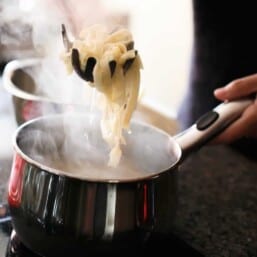
Homemade Pasta
Ingredients
- 3½ cups semolina flour substitute all purpose
- 4 eggs
- water 2 tablespoons at a time, up to ¼ cup
Instructions
- Combine flour, eggs and water with your paddle attachment. You don't want the dough to be crumbly or sticky, just doughy! Add an additional tablespoon until you reach the desired consistency, mixing on speed 4.3½ cups semolina flour, 4 eggs, water
- Using your dough hook, knead for 2 minutes on speed 4.
- Put your pasta roller attachment on level 1. Make a flat dough ball and feed through. I usually like to do this on speed 4…fast enough, but not too fast.
- Continue to place the dough through increasing the setting each time…level 2, 3, 4 and finally 5 for fettuccine. Do this with all of your dough.
- Switch to your fettuccine or linguini attachment unless you’re making pappardelle or ravioli. Feed the dough through, catching the noodles with your other hand and immediately place into your pot of boiling water.
- Boil noodles 3 minutes & drain.
Julie’s Tips
Consistency
- Dough should not be at all sticky when you run it through your pasta maker or it will stick to the machine. If it is gluey, it is too moist. Put flour on your hands and work with into your dough ball.
- If your noodles end up a little crumbly or gummy it is most likely because the dough is under developed and needed a little more kneading.
- You can let your pasta dough rest for 30 minutes after kneading to let the gluten relax. Letting the gluten relax after kneading makes for a loser dough and is easier to mold into more intricate noodle shapes.
By Hand
- If you are rolling the pasta dough out by hand, use a lightly floured surface. Roll the dough our very thinly. Don’t worry about too much extra flour as it will shake off as you cut the pasta or rinse off in the boiling water when cooking.
Video
Estimated nutrition information is provided as a courtesy and is not guaranteed.
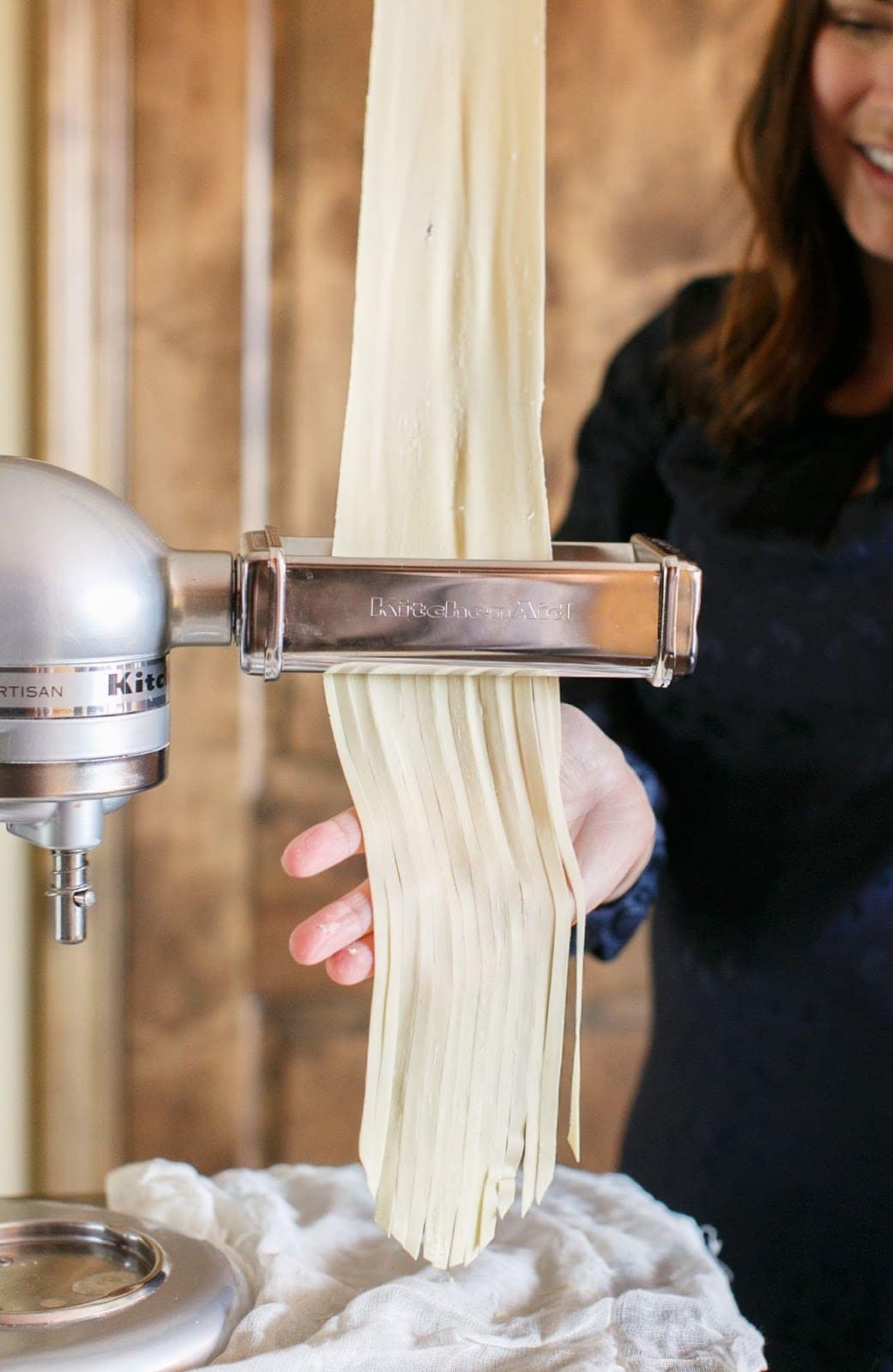



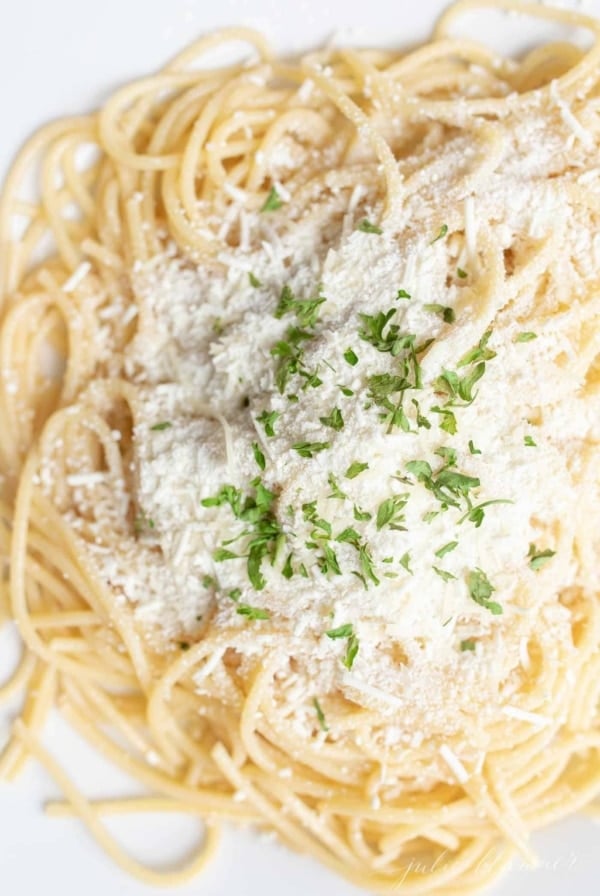

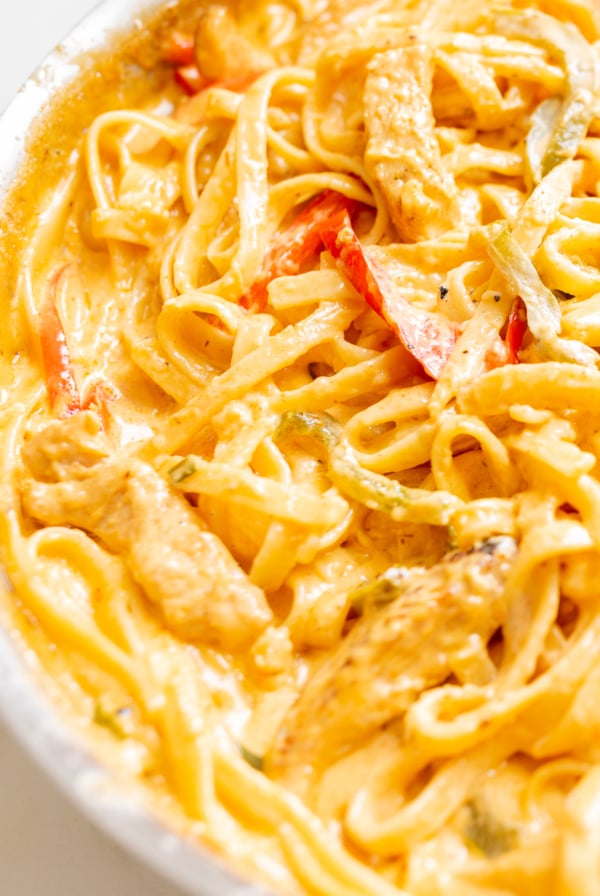
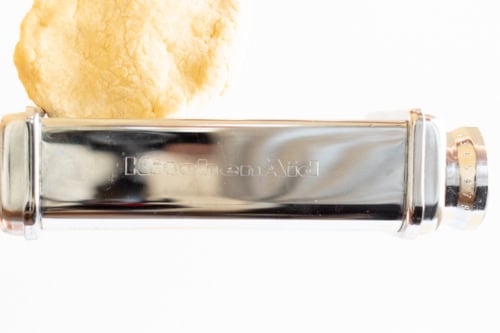

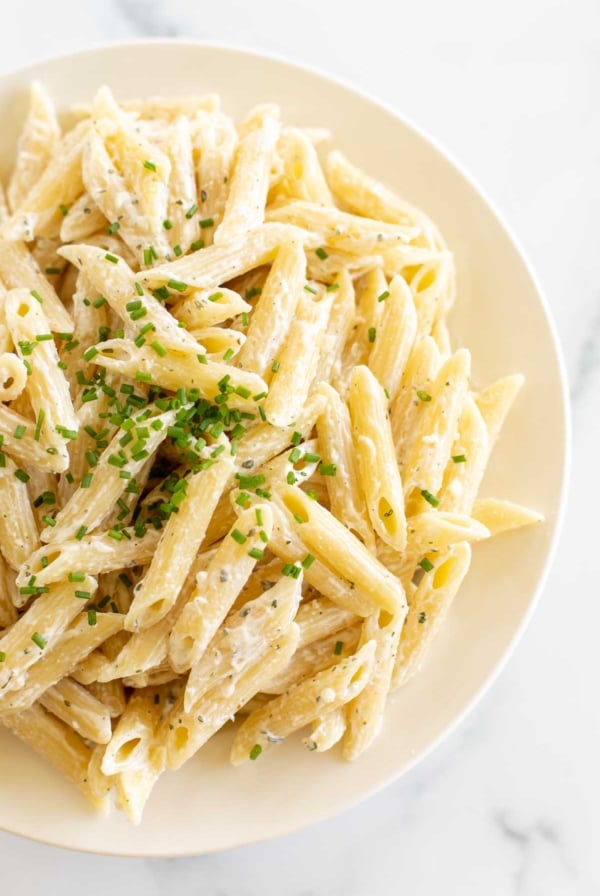
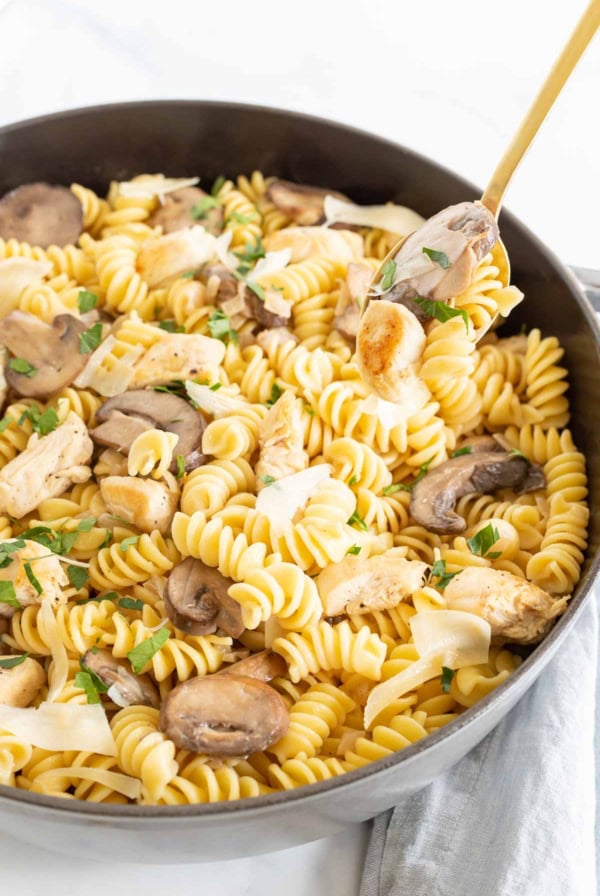
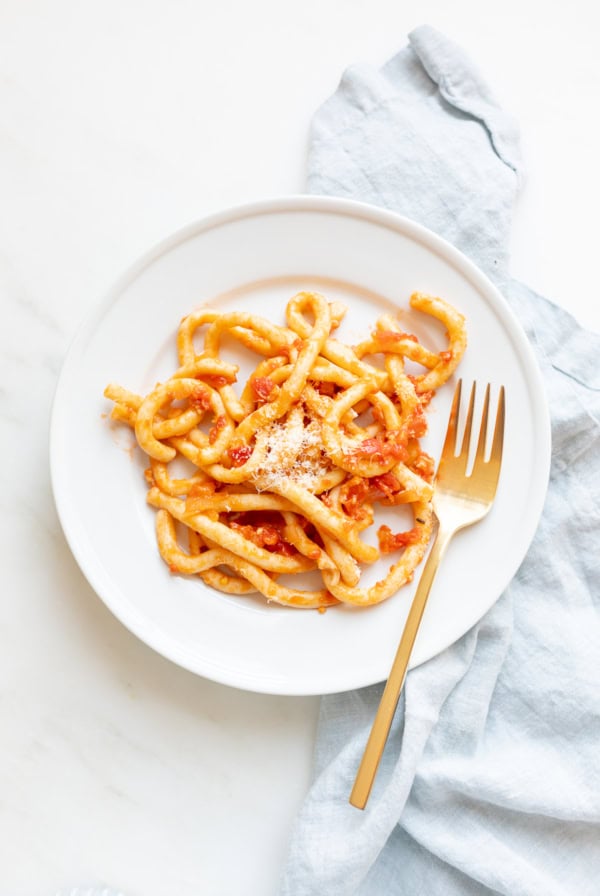






Thanks for the recipe, that looks really easy.
I think I have that attachment. Going to try it.
About how much pasta does this make? I’m using a recipe that calls for 1 lb of pasta. Will this be close?
About a pound, enjoy!
Can you use white wheat flour in this wonderful recipe instead of All-purpose flour? Will it turn out okay, have you tried it? Looking forward to testing this out with my kitchenaid. I love cooking at home for those that I love. I’m always baking something or testing out a new idea.
You can, Emily! I’ll share my wheat flour recipe – maybe even this afternoon!
I frequently make light wheat pasta because it still rolls through the attachment easily. I’ve never tried white wheat flour.
2 1⁄2 c sifted whole wheat flour
1 c sifted unbleached flour
4 large eggs
2 Tbsp water
1⁄2 tsp salt
My husband bought me the pasta attachments for my kitchen aide mixer and the grinder attachment. So happy to come across your pinterest page ! And now following you on IG.
I’m so happy to have you, Debbie! You’ll love it! Just remember that it’s not set in stone, if it’s too sticky, add flour, too dry, add water. It’s so easier & becomes second nature after making it a few times. Enjoy!